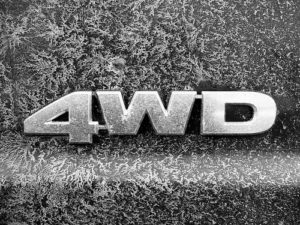How Fast Can I Drive in 4WD?

Driver Responsibility
First and foremost, the driver who has control over the vehicle will always determine the speed of the vehicle. Most high-speed accidents result from driver error, not component malfunction. This means driving at or under the posted speed limit, especially under the limit when the conditions are not favorable, is preferred. Ice/sleet, snow and wet roads will always make the roads more hazardous to negotiate, causing slipping and skidding, and this is magnified at higher speeds. AWD (all wheel drive) and regular 4WD allow for more stability and traction on uneven or slippery surfaces and make driving safer. However, they cannot defy the law of physics—going too fast means performance parameters have been exceeded for the condition involved.
The Different 4WD Systems
The general AWD and 4WD systems do not have a mechanical unsafe speed limit that will permanently damage components or negatively affect performance. The exception is the “part time” or manually operated system that allows the driver to choose between 2WD and 4WD. Part time 4WD is not as precise as regular 4WD and AWD, which are compensate automatically in function. Damage to the drive components can result when part time drive is chosen for dry, smooth surfaces. Also, it does not permit stability or traction control or ABS to function. Part time 4WD dictates that 2-wheel and 4-wheel drive be alternated between dry and slippery surfaces respectively. Using 4WD on smooth, dry surfaces at high speeds may result in serious damage to driveline components.
Part Time 4WD Problems
With the part time 4WD system, the transmission case powers the rear and front drive shafts at the same RPM. If the front axle needs more RPM, it cannot be delivered, which causes an uneven traction problem. This is because the combined RPM of the front axels are higher than that of the rears. In the case where the front wheels are momentarily gaining traction on a non-slippery surface and the rear wheels are digging in, the effect causes a discrepancy between the front and rear axle—an added rotational force that comes from the front shaft that must be slowed down to match the rear end rotational force. The result is a “bind” that puts undue pressure on the transfer case and all the associated components. The faster the engine RPM, the more risk involved. In addition, driving with part time 4WD at highway speeds on dry, smooth surfaces will can cause irreversible damage to differential gears, U-Joints, axles, drive shafts, bearings and transfer case chains and gears
Photo credit: Robert S. Donovan / Foter.com / CC BY